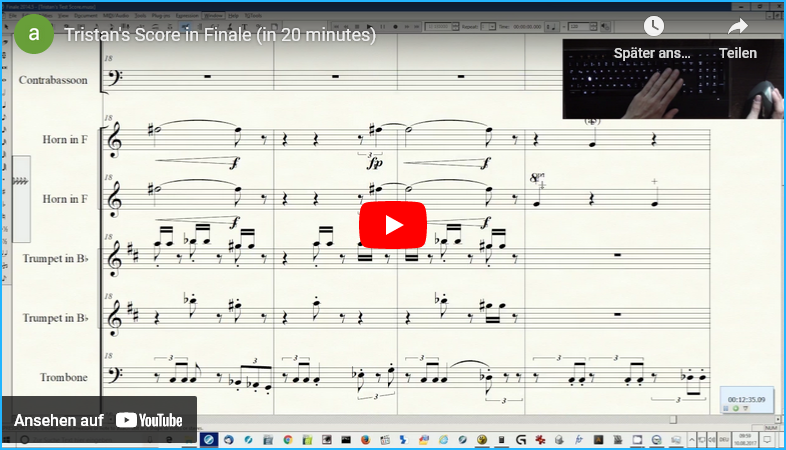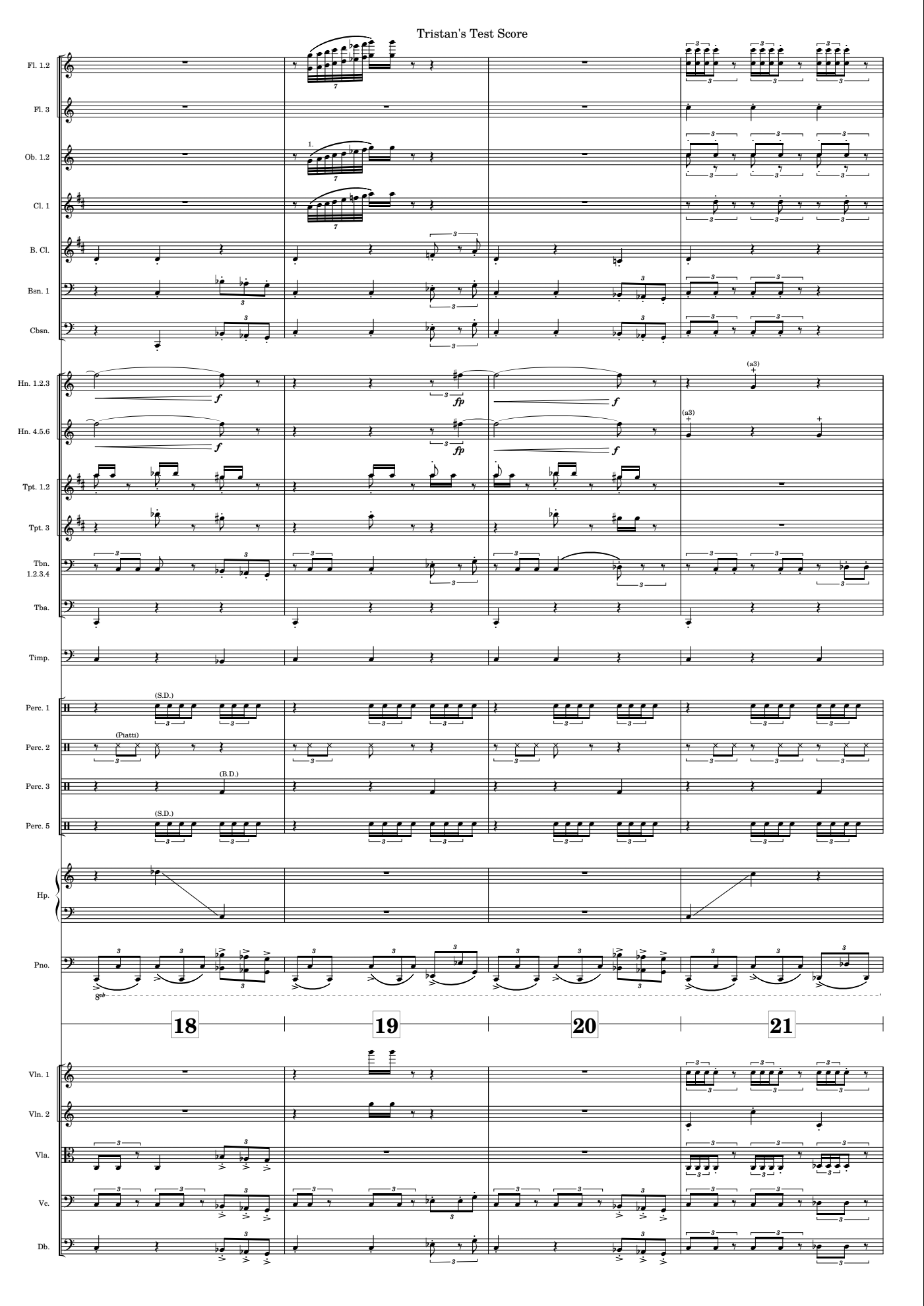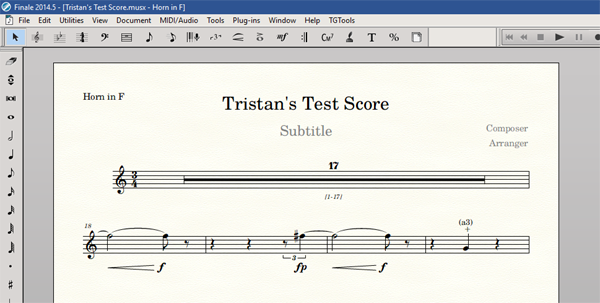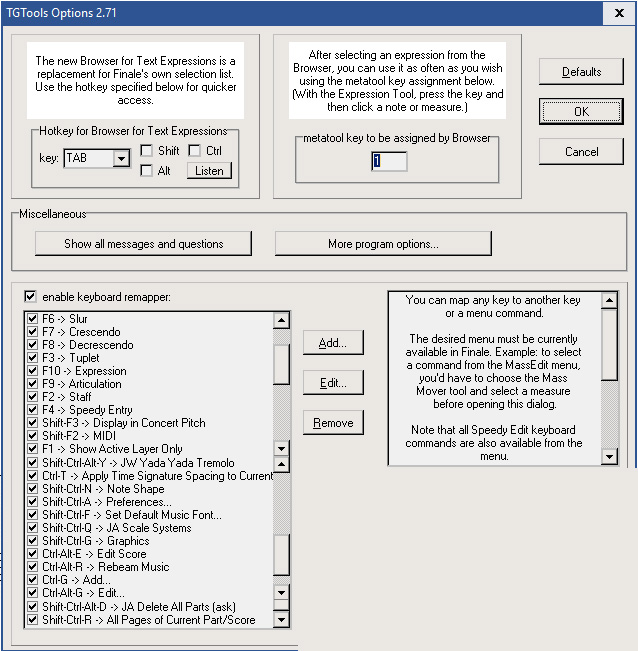Facebook Engraving Challenge
The
Music Engraving Tips group on Facebook recently featured an
engraving challenge for replicating
this score.
Here is our result created from scratch in just
20 minutes starting with Finale's default document.

Download the
final PDF score
Download Finale's
output before applying the plugins
Download the
Finale musx document
 Video: 20 minute live stream of the whole engraving process
Video: 20 minute live stream of the whole engraving process
3rd party Finale plugins used:
-Elbsound.studio's
Perfect Layout for optimizing all other layout issues (not available yet to the public, beta test only).
-Elbsound.studio's
House Style for changing the style of the score (not available yet).
-Elbsound.studio's Scale Systems for scaling the page and staff systems to an optimal size (not available yet).
-
JW Lua for running the Elbsound.studio plugins.
-
Patterson Beams for beam optimization
-
TGTools Compress Spacing for compressing the spacing of the 7-tuplet.
-
TGTools Keyboard Remapper for quick access to the main Finale tools (see screenshot
below for my setup).
Other helpers used:
-
AutoHotKey for faster navigation in Speedy Entry and Scroll View (see
below for my setup)
-The document uses Lilypond's free
Gonville font for the musical symbols (and the Elbsound font
GnvilFIN for the rest symbols) and the free
TeX Gyre Schola for text.
-Foxit PDF printer
Normally I also use a
Logitech G13 for more complex Finale operations (especially parts layout, edit filter automation and playback muting), but it was not necessary here.
Differences to the
original document from the challenge:
- the tuplets in my document use a more standard placement (usually on the stem side)
- the bracket on the timpani staff is missing (Gould says it is optional to have a group bracket on the timpani staff)
- Finale's consolidated rests in measure 4 oboe are probably not ideal here (the original is better!): to solve this open the Edit Frame dialog of this measure and uncheck "Combine Rests")
- Vln.1/Vln.2 usually have a group bracket by default. But Finale is a bit inconsistent here: why do the clarinet/bass clarinet and bassoon/contrabassoons don't have a group bracket by default.
- the spacing of the 7-tuplet in measure 2 still doesn't look quite convincing: the last space is much too small and the other spaces are too different. Probably I clicked too often on "Compress spacing".
- the single piano staff doesn't have a group bracket anymore. I prefer this look. To have the bracket visible, go to Edit Group and check "Show bracket if group contains only one staff"
- the top tuplet brackets in measure 4/oboe could be shifted slightly closer to the staff.

Image 1: The final page after 20 minutes (for PDF click on the image)
The plugins also have prepared the
linked parts in the background.
This is how the first horn part currently looks - i.e. the layout optimizations have been performed for printing, but the part names need to be edited and multiple voice staves - like the oboes - need to be split with the parts manager.

Image 2: How do the parts look after 20 minutes?
Here is a video of the same score page
created live in Sibelius (great job, Justin!).
And here is an image of the page
created in Lilypond.

Image 3: Setup of my TG Tools "Keyboard Remapper" tool (TGTools->Options->Keyboard Remapper)
AutoHotKey scripts I used in this video: (more on
AutoHotKey in Finale)
Ctrl-Arrow Left/Right or Shift-Mouse Wheel Up/Down for jumping to the next/previous measure in Scroll View
Ctrl-Arrow Up/Down for jumping to the next octave in Speedy Entry
Remap y/z to z/y for using Speedy Entry in the English Finale version on a German keyboard




